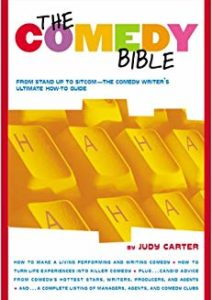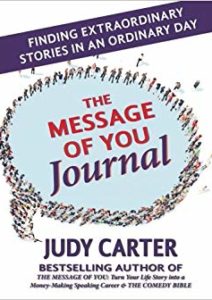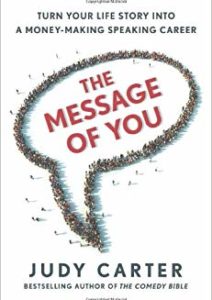If you are an entrepreneur–or for that matter a salesperson, speaker or even a comic–there is a story that you need to tell. It’s the story that will attract the attention of and engage your audience. It’s a story that will make them laugh. In the end, it’s the story that will will motivate them to buy your products and services.
So what is this amazing story? Simple: it’s the story of why what you do isn’t just some job. What you’re doing is actually a calling. This is your HERO STORY.
The route to people’s hearts (and thereby their wallets) is through telling a story. It is your Hero Story that will drive home your message, and turn facts and figures into memorable moments and sales. When told with both humor and drama, it will inspire. In the end, people respond to emotion, not data.
Information can be boring. Think of all those times you’ve been trapped in a folding chair, listening to a miserable PowerPoint show, getting the life force sucked out of you with every chart, graph, and missing joke. But, getting your point across by telling a story will have audiences running to buy your products, rather than running for the door.
Last night, I did an online story session with a software sales team. This was a serious group of sales techies that were more used to getting snores than snickers. To their surprise, they found they could take ordinary events and turn them into extraordinary stories.
So, how do you tell this amazing Hero Story? Here are 8 tips to guide you through the process:
- Describe a specific person you or your product has helped. Describe that person so we can picture them. For instance: “Bob is a 35 year old Project Manager, heading a team of 20.”
- Tell us what “Bob” wanted. “Bob wanted to get projects completed on time, decrease office stress, and empower his team.”
- Share in detail “Bob’s” obstacles that were getting in the way of “Bob” getting what he wanted. As you explain “Bob’s” obstacles, describe his failed solutions, unrealistic demands, and act-out dialogue. Here’s a sample scenario: “Bob’s staff was constantly complaining. He tried giving didn’t work flow charts, but nothing worked. He just couldn’t get his team to hit deadlines. He constantly had staff lining up outside of his office complaining, ‘I’m not getting my work orders enough ahead of time and the vending machines are broken!’”
- Have the obstacles “Bob” is facing build to a crescendo of frustration. “Bob was always working late, coming home to a frustrated wife complaining he wasn’t helping enough with the kids. And Bob was developing an ulcer.”
- You (or your product) enter the story. Describe what you or your services did for “Bob.” “After hearing ‘Bob’s’ struggles, I created a 3-Step plan starting with a 2-hour training program to empower his staff.”
- Describe the person’s resistance. “Bob said, ‘Are you crazy – I don’t have the time for that!’” This accounts for the concerns your audience might be having and squashes them.
- End of the story is where you describe how this person got the results they wanted. Describe this in specific detail. “Their team started to make their own decisions and ‘Bob’ had more time to be with his family.” “Deadlines were met.”
- Tell the message of your story: “Empowering your team doesn’t take more money, but better strategy.”
This story structure works! Don’t take my word for it. The next time you pitch your product or services, try this 8-step story formula and tell your Hero Story. And, bring a lot of your product as you’ll be amazed at how telling stories will increase your back of the room sales.
Need help telling your story? Download my Ebook The Message of You: Turn Your Life Story into a Money-Making Speech.
Pipeliner CRM helps enable salespeople to tell the right story. Get your free trial of Pipeliner CRM now.















Comments (1)
What a great tip! I’ve just started to approach local business owners in person to pitch my digital marketing services and I am going to try this.